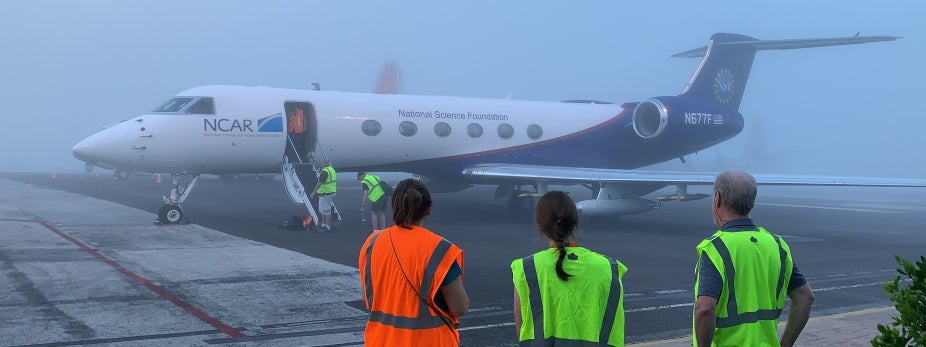OTREC Field Project Teacher Guide

The Gulfstream-V research aircraft on the runway of Daniel Oduber Quirós International Airport in Liberia, Costa Rica.
This classroom activity explores tropical convection and Skew-T plots using data and videos from the Organization of Tropical East Pacific Convection (OTREC) field project.
Teacher Guide downloads as a Zip file [28.1 MB] and includes:
- OTREC Teacher Guide
- Summary of OTREC Videos
- OTREC Student Worksheet
Last updated: November 2022
Grade Level
High School, with adaptions for introductory Undergraduate courses
Learning Goals
- Describe the formation of convective systems using data collected during the OTREC field project in the East Pacific and Caribbean regions.
- Discuss the vertical structure of the atmosphere and how clouds form, as well as interpret satellite images to identify convective systems.
- Optional: Describe the atmospheric conditions recorded from dropsondes during the OTREC field project using Skew-T diagrams.
- Optional: Estimate relative humidity of the atmosphere using Skew-T diagrams.
Time
This activity can be completed in a class period; however, optionally you can break this up into multiple class periods depending on time of class.
Next Generation Science Standards
- Weather and climate are influenced by interactions involving sunlight, the ocean, the atmosphere, ice, landforms, and living things. These interactions vary with latitude, altitude, and local and regional geography, all of which can affect oceanic and atmospheric flow patterns. (MS-ESS2.D)
- The foundation for Earth’s global climate systems is the electromagnetic radiation from the sun, as well as its reflection, absorption, storage, and redistribution among the atmosphere, ocean, and land systems, and this energy’s re-radiation into space. (HS-ESS2.D)
ESS2.C The Roles of Water in Earth's Surface Processes
- Water continually cycles among land, ocean, and atmosphere via transpiration, evaporation, condensation and crystallization, and precipitation, as well as downhill flows on land. (MS-ESS2.C)
- The complex patterns of the changes and the movement of water in the atmosphere, determined by winds, landforms, and ocean temperatures and currents, are major determinants of local weather patterns. (MS-ESS2.C)
- The abundance of liquid water on Earth’s surface and its unique combination of physical and chemical properties are central to the planet’s dynamics. (HS-ESS2.C)